THE COLORFUL EVENING OF THE 27TH OF APRIL 2025.
The title mentions a colorful evening but isn't meant to be taken literally. The evening in general wasn't more colorful than the previous few I enjoyed in Palera, but I did find two insects with an intense, vivid coloration, making the entire experience a bit more colorful than usual.
Earlier, in the second sentence of the post, precisely, I mentioned the place called Palera. It's an agriculture-oriented coastal area near the village of Liznjan, not far from where I live. There are only about five or six kilometers from my hometown to Palera. Most of my recent posts are set there, and I'm pretty sure that the future ones will be too, at least until the end of this month, and quite probably throughout May as well.
This is the smallest insect I photographed yesterday. It's a fly, that's for sure, but that's all I'm sure about. It could be a species from the Drosophilidae family, it looked a bit like one, but who knows - I, most certainly don't. Seen through the naked eye, this is just a black dot on the top of the blade of grass. Many small insects can be seen in full detail only through the macro lens.
That's why macrophotography is so cool, it brings to our eyes a hidden world full of biodiversity and wonders.
The much bigger insect shown in these two shots isn't particularly colorful either. I mean, its green color is nice and vivid, but with all the green vegetation around, it just can't stand out as something exceptionally brightly coloured. If its surroundings were gray like some industrial suburbs on a cloudy day, this Chrysoperla carnea, commonly known as the common green lacewing, could be considered refreshingly colorful.
In some shots, the flash of my camera created a lovely, colorful aberration on the lacewing's elegant wings.
A slight change in the angle can make the light reflect in weird and beautiful ways.
This is a very common insect here in my area. I photographed it - I don't know, hundreds or thousands of times, but it always feels fresh and worth exploring. Especially in Spring, at the beginning of the macro-season.
The next species is a different story. It's a rare encounter.
I saw this beautiful red beetle only a few times, and never in big numbers. It belongs to the Pyrochroidae family. Pyrochroidae are commonly known as the fire-coloured beetles. For obvious reasons, I may add.
The scientific name of this particular species, commonly known as the red-headed cardinal beetle, is Pyrochroa serraticornis.
The larvae live under loose bark, but they don't feed on decaying wood. Both adults and larvae are carnivorous and feed on various smaller insects.
The Pyrochroa serraticornis shown in these photographs was resting on the pretty tall Rumex crispus plant. I didn't have to crouch or bend like I often do while taking shots here in Palera.
A bit further, I noticed a moth hanging on another plant of the same kind.
Here I zoomed a bit more to get the insect closer to my eyes.
For a real macro shot taken through the appropriate lens, I had to sneak slowly and get very close to the moth. The maneuver took quite a bit to be successfully done.
This wide shot shows the same plant in a wider context. You can see a bit of the scenery as well. The moth is still nicely visible in the center of the frame, especially if you enlarge the picture by clicking on it.
Some insects behave in a way that makes them very hard to photograph. I encounter this rove beetle quite often, but rarely have I had an opportunity for a sharp photograph. They always run around pretty fast, and rest only in safe, dark places under rocks, in the soil, or under the decaying vegetation on the ground.
The scientific name of the species is Paederus littoralis. It belongs to the Staphylinidae family.
Both adults and larvae are agile predators that feed on very small insects.
If you take a good look at the center of this very green picture, which seemingly shows only an up-close portrait of the Anthemis arvensis plant, you may find an interesting beetle hidden in plain sight.
It's a species from the large and varied Chrysomelidae family. The subfamily is Cassidinae. This type of beetle is commonly known as a tortoise beetle. The scientific name of the species is Cassida rubiginosa. In the following photograph ...
... I used the macro lens to get very close to the insect. Even at that distance, and with the much shallower depth of field that better separates the subject from the slightly blurred background, the Cassida rubiginosa still manages to be relatively well-hidden in plain sight.
I arrived in Palera a bit later than usual yesterday, so there wasn't much opportunity for photography without the flash. This is the only scene shown in ambient light.
The Psilothrix viridicoeruleus, beetles from the Melyridae family, were mating on the flower bud of the Sonchus oleraceus plant.
The texture and iridescence of their exoskeleton look great in the low, diffuse light at dusk.
The shutter speed had to be pretty low, so it took me quite a few blurred shots before getting a decently sharp one suitable for this post, which is trying to preserve a fairly high quality in the visual department.
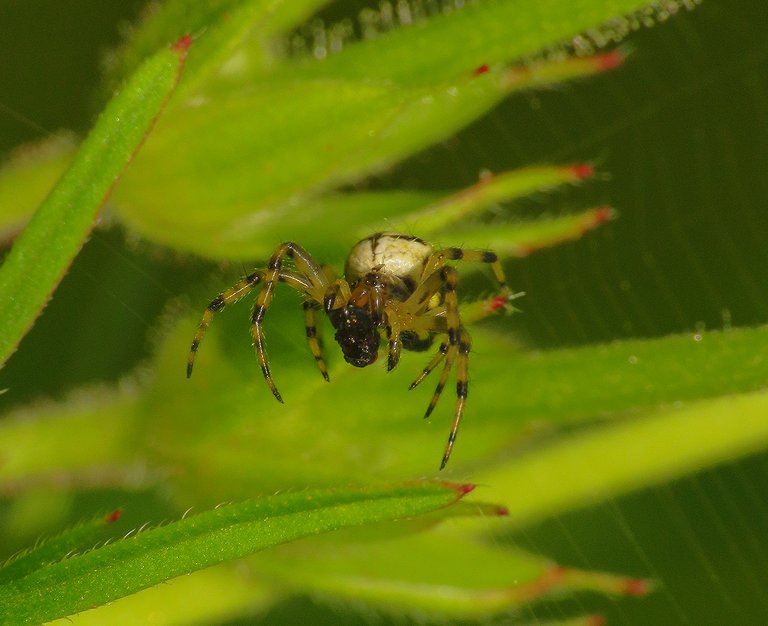
Juvenile Neoscona adianta spiders are very numerous these days in Palera, so I end up photographing at least one of them each time I visit the place.
Here you can see the spiderling feeding on a very small insect caught in the web.
Crab spiders (Thomisidae family) don't build webs to get their meal. They wait in ambush. In this and the following photograph ...
... you can see an Xysticus cristatus with the prey. The spider has caught a longhorn bee (Eucera longicornis)
This is the Colias croceus.
The lovely yellow butterfly from the Pieridae family was resting on the Rumex crispus plant.
In the middle of a sunny day, it ain't easy to catch them, but in the evening, when the butterflies get ready to spend the night sleeping, I can get very close to them.
In this extreme macro, the focus is on the small details of the wings. The colorful scales that cover the surface are also visible.
Even in a wide shot that shows a bit of the evening scenery, a kind of shot in which an insect is always very small, this beautiful butterfly easily steals the show and gets the attention.
Here you can see the pretty big, predatory fly from the Empididae family that was resting on the same plant, not far from the butterfly. If you enlarge the previous photograph and explore all the details on it, you may find the same fly there, too.
The name of the species is Empis tessellata.
The last insect I had the opportunity to photograph yesterday was a much smaller fly.
It belongs to the Opomyzidae family. That's the only thing I'm sure about, can't tell you the name of the species.
I observed this tiny insect through the macro lens for about ten minutes. At some point, the fly started gesticulating with its wings - a typical Opomyzidae behaviour.
And that's it. The post ends here. Hope you enjoyed the evening tour. As always on Hive, the photographs are my work. THE END.
The following links will take you to the sites with more information about some of the protagonists of today's post. I found some stuff about them there.
https://en.wikipedia.org/wiki/Drosophilidae
https://en.wikipedia.org/wiki/Chrysoperla_carnea
https://en.wikipedia.org/wiki/Pyrochroa_serraticornis
https://en.wikipedia.org/wiki/Paederus
https://en.wikipedia.org/wiki/Thistle_tortoise_beetle
https://commons.wikimedia.org/wiki/File:Psilothrix_viridicoeruleus_(Geoffroy_in_Fourcroy,1785)(16774575602).png
https://en.wikipedia.org/wiki/Neoscona_adianta
https://en.wikipedia.org/wiki/Xysticus_cristatus
https://en.wikipedia.org/wiki/Colias_croceus
https://en.wikipedia.org/wiki/Empis_tessellata
https://en.wikipedia.org/wiki/Opomyzidae
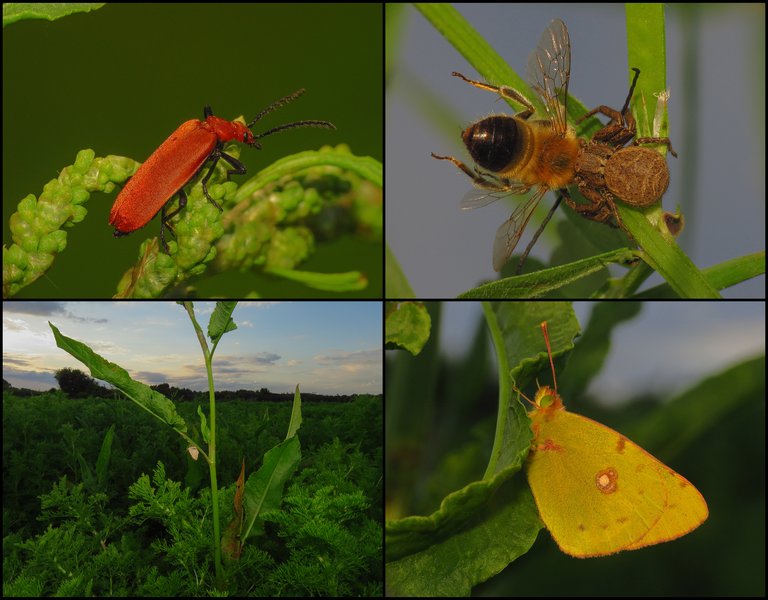
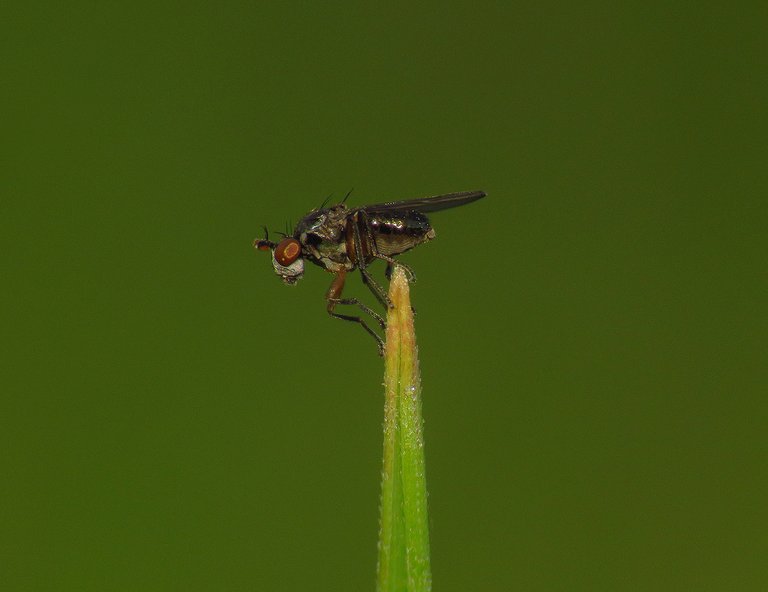

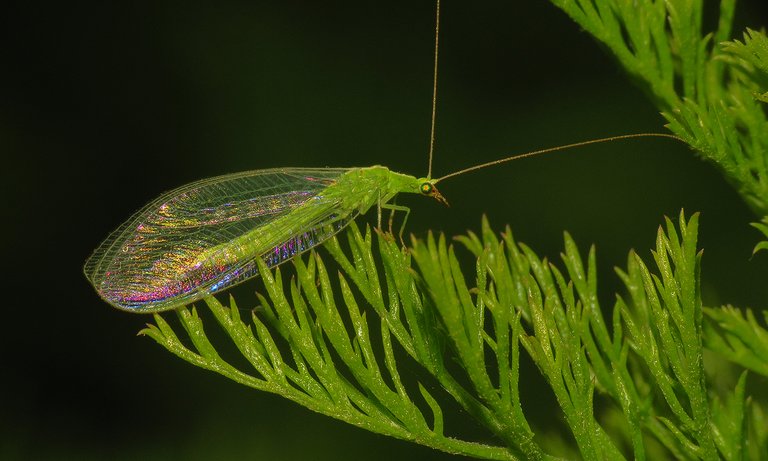

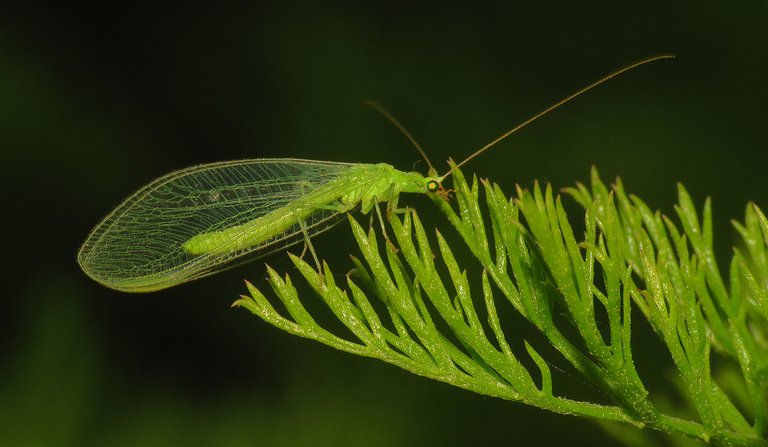
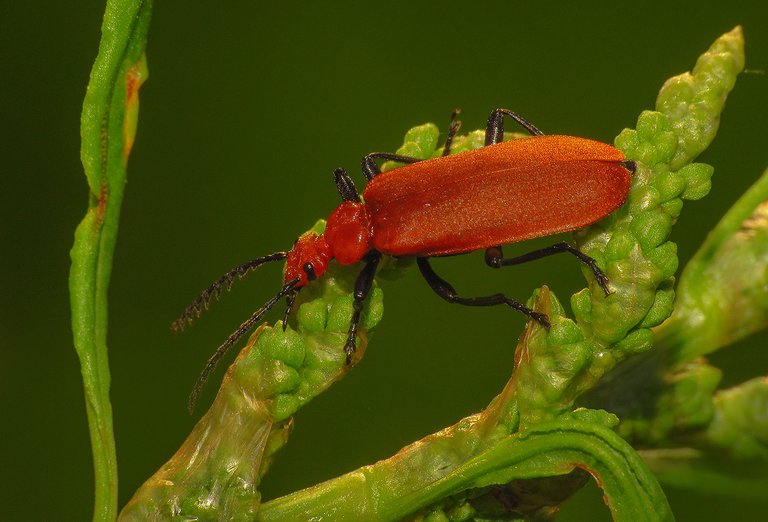
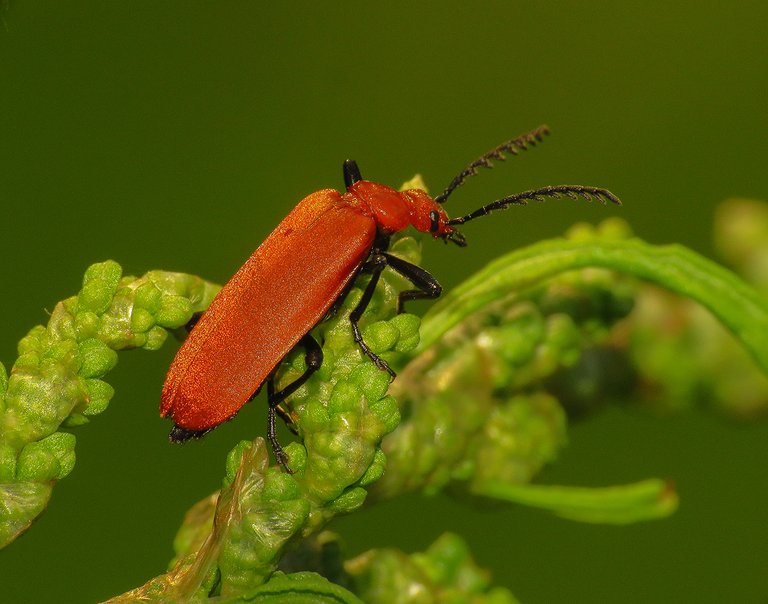
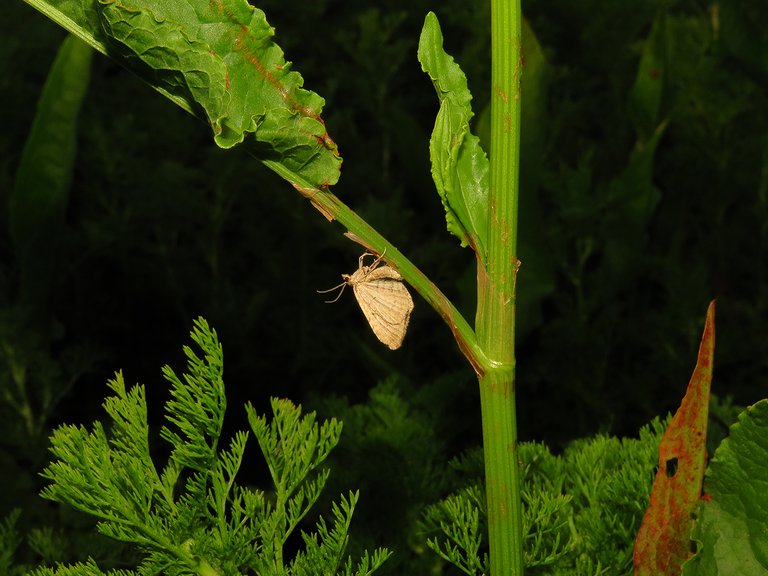
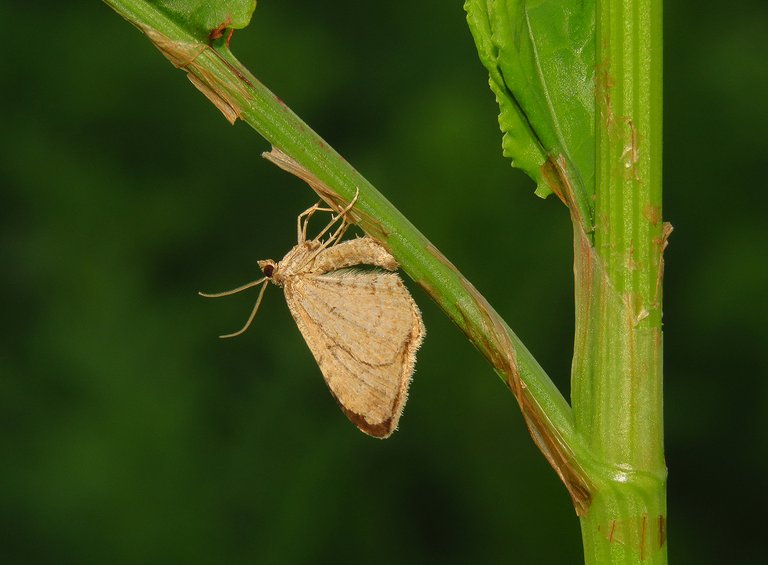
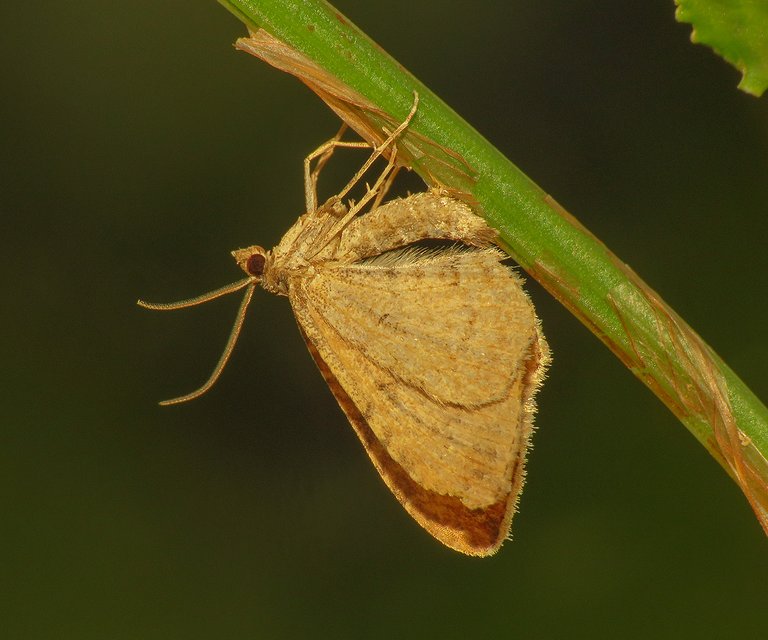
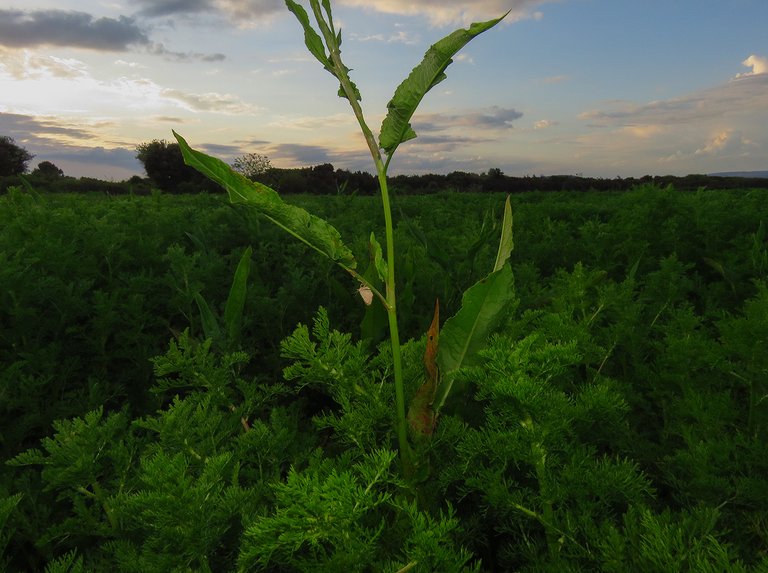

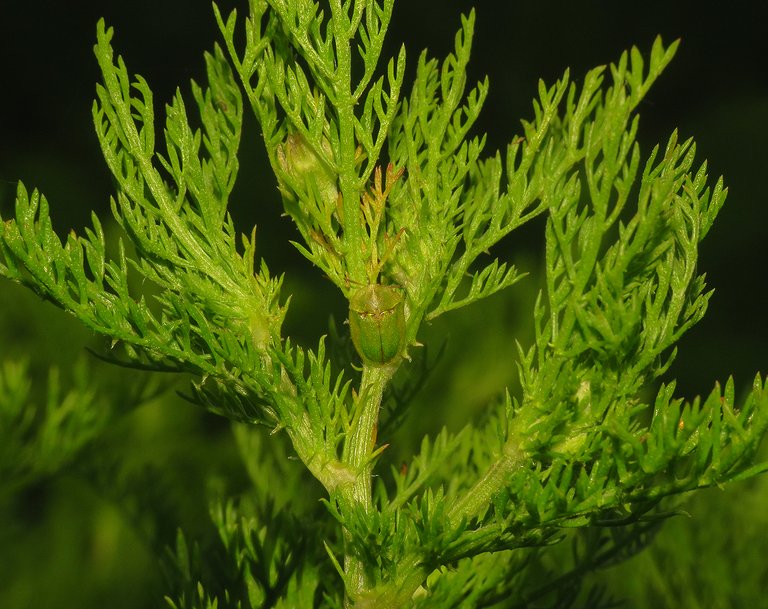
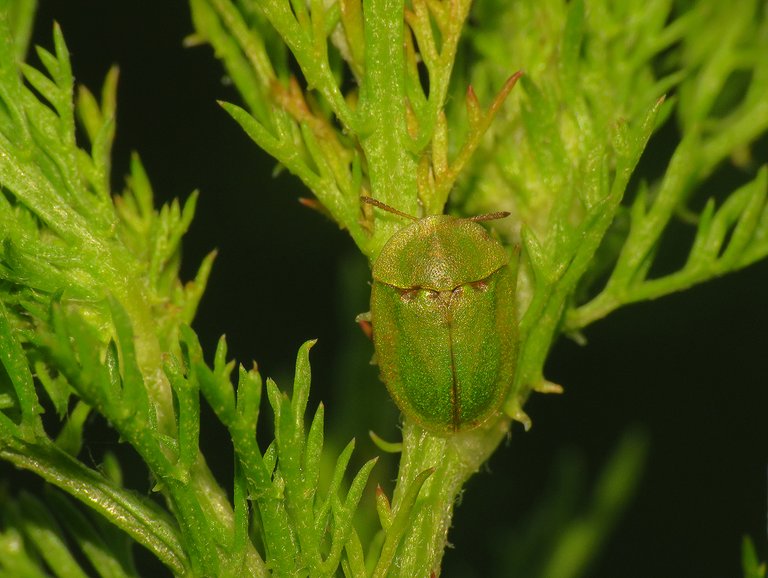

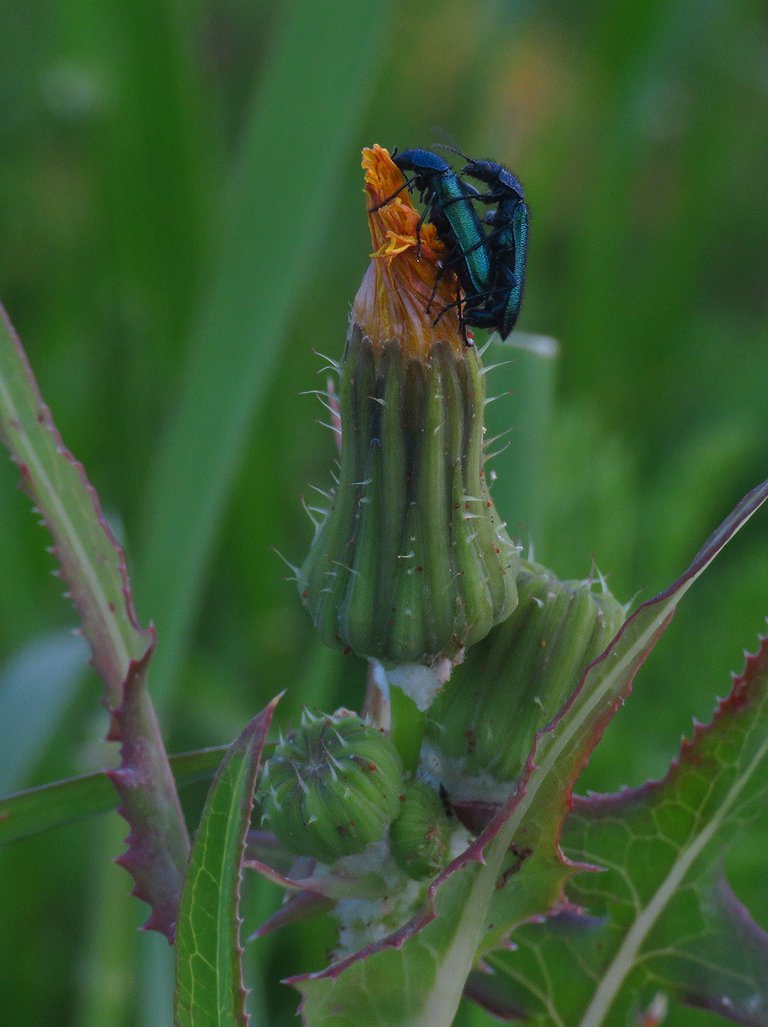
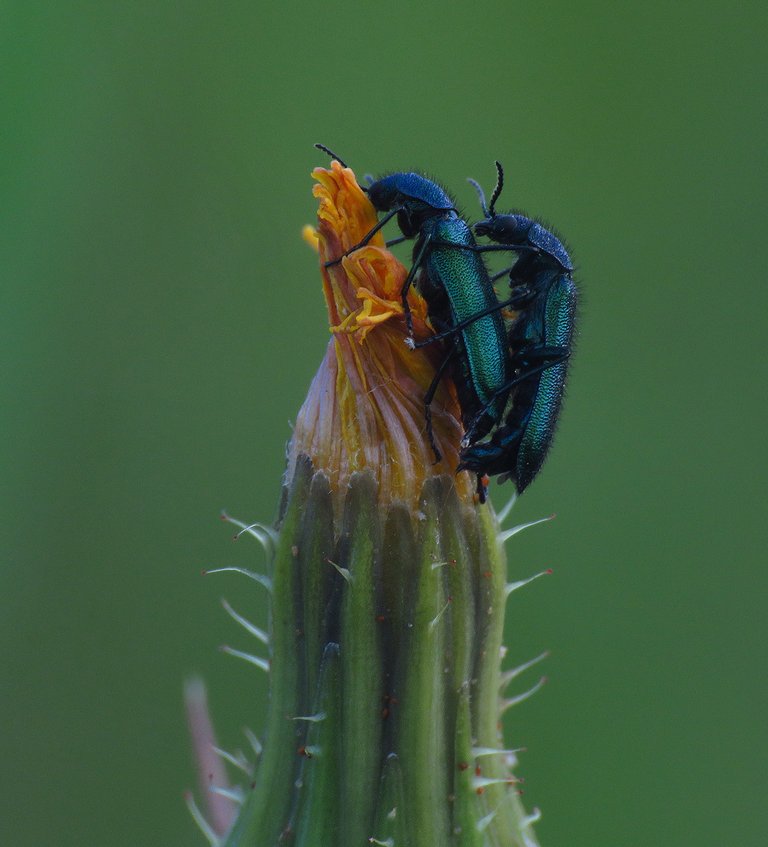
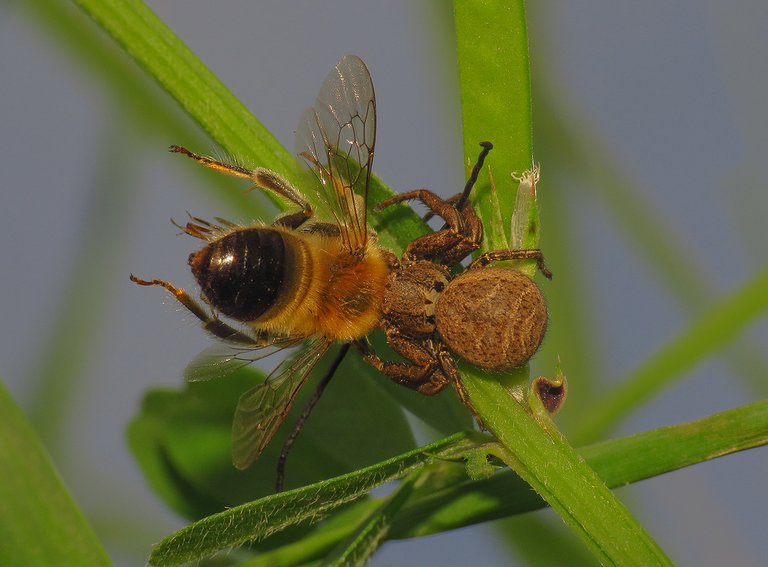


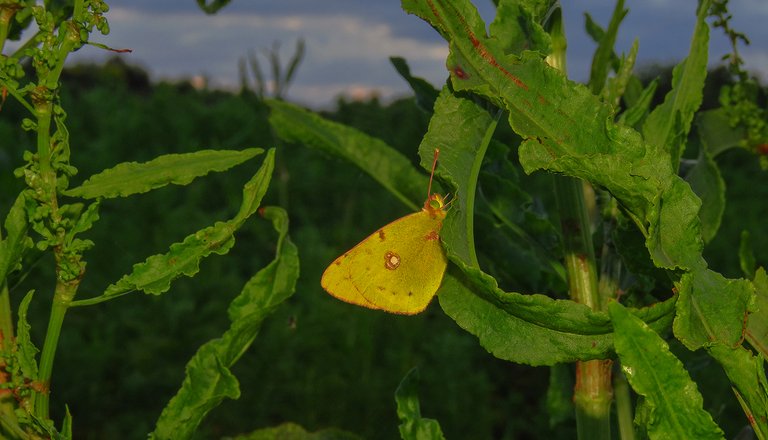

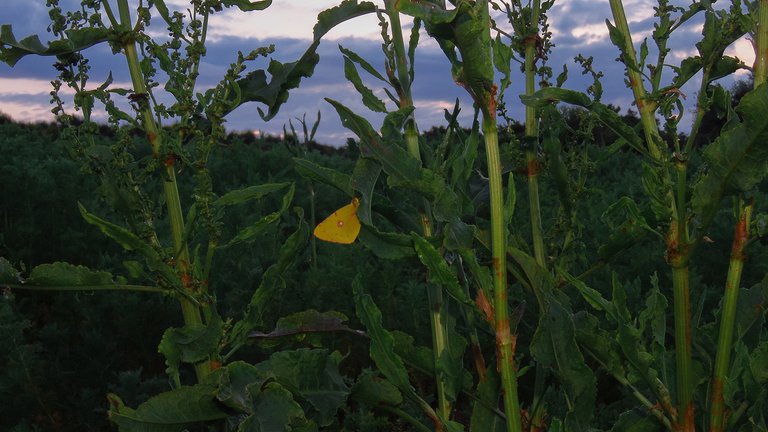
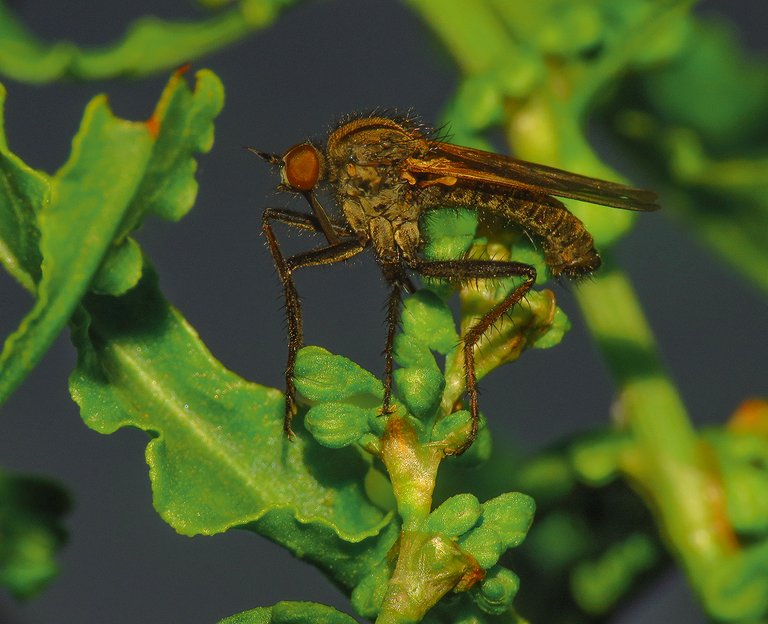
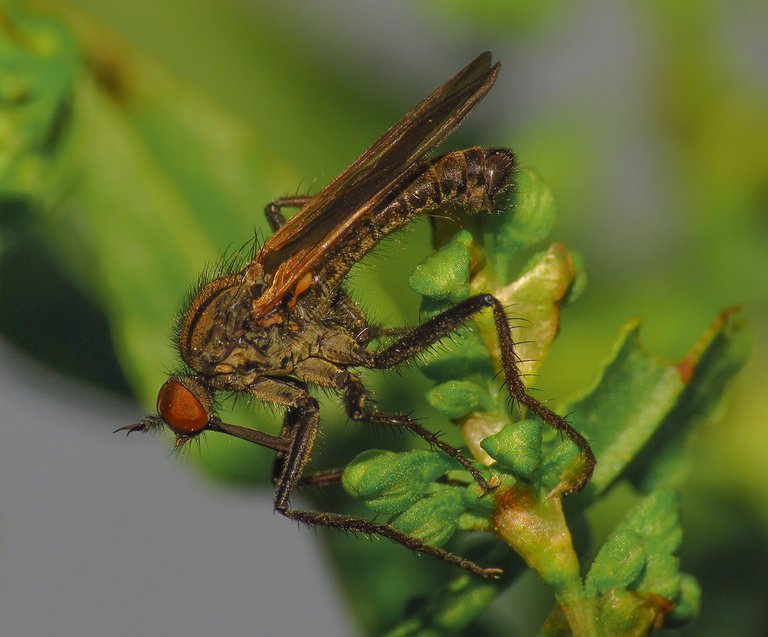
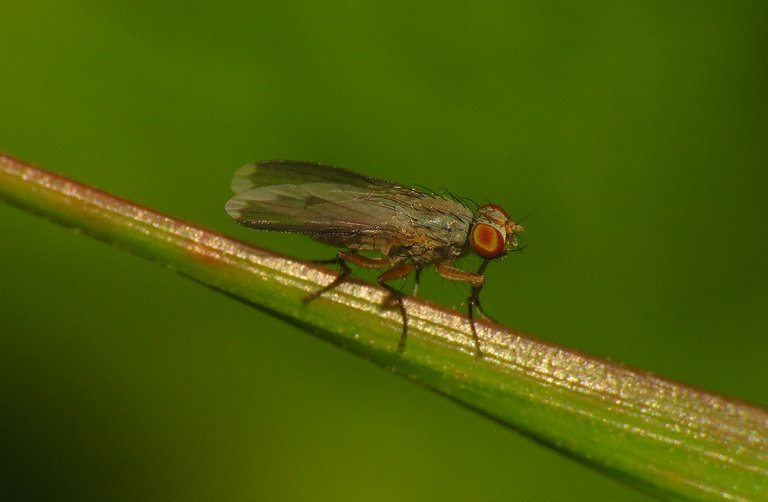
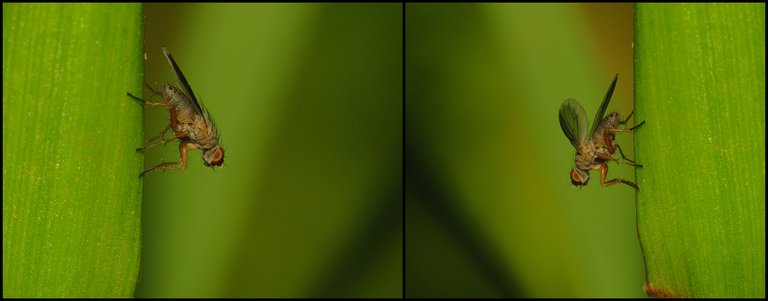
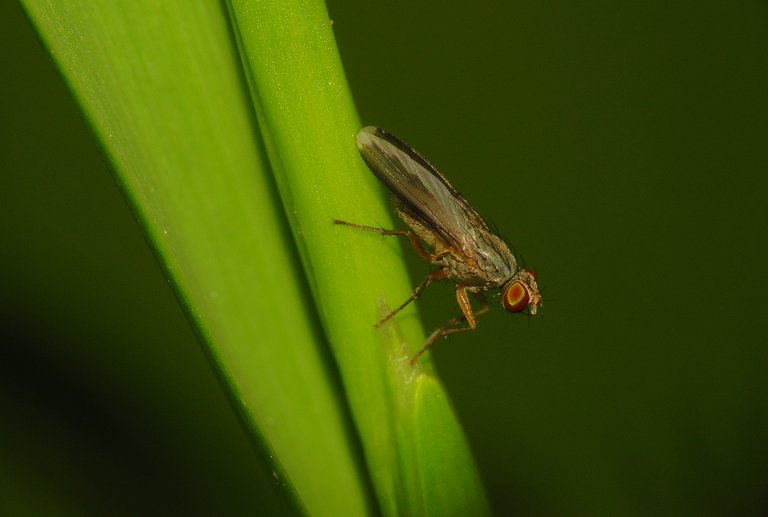
You received an upvote ecency
!discovery 30
This post was shared and voted inside the discord by the curators team of discovery-it
Join our Community and follow our Curation Trail
Discovery-it is also a Witness, vote for us here
Delegate to us for passive income. Check our 80% fee-back Program
Yes, that was yesterday!
This was even better, like little Aliens. The little transparent butterflies are as subtle as you can imagine. Good artist material.
Super clear pictures👌
Glad you like the post. 🙂 Thanks for the feedback. I'm always happy to see that there is an audience interested in these small details of nature here in my area becouse this is the thing I love to do the most.
Great pictures as always!
Thanks 🙂
@tipu curate
Upvoted 👌 (Mana: 47/57) Liquid rewards.
The photos of the insects that you portrait are really very cool, I really like to see your photos
Thank you. 🙂
I was always surprised by your work, it's not easy to capture these creatures. Your talent is amazing.
Thank you. 🙂 Glad you appreciate this macro stuff.
https://x.com/nasseir75/status/1916815164613038298?t=LPKjHM6EjQ5IscJHNEbMVA&s=19
https://x.com/lee19389/status/1916831436742574227
#hive #posh
This is amazing to see that you have captured and shared a lot of beautiful insect. Nice insect photos
Thank you. 🙂 Glad you like this macro stuff
I like your macro insect photo very much
It's always a pleasure to enjoy your awesome macros @borjan friend! 😍📷🐛🕷🐜🦋🐝
!PIZZA
$PIZZA slices delivered:
@jlinaresp(3/15) tipped @borjan
Come get MOONed!
Amaxing macro photography display again!!!!
That red better looks colorful and cute but the smell isn't 😆
🙂
You’ve got an amazing photography skill
They look beautiful
Thanks. 🙂 Glad you enjoy the view of plants and small animals.
very nice pictures.
Thank you 🙂
Sometimes, I think about how you set your camera to achieve these wonderful photos😅😅
They are very nice!
Hehehehe it's on manual setting. 🙂 That's the key ingredient. It is necessary to change the setting constantly as the light changes, and also to get different effects and capture different atmospheres. Automatic stuff can let you do some ordinary stuff, but in macro, it doesn't help much. The focus also has to be manual. It's much more work than snapping around, but it pays off.
I really enjoyed reading about your walk in Palera. The insects you found are so colourful and interesting. I like the photos you took, especially the close-up shots. It is great how you explained each insect and shared a little story about finding them. Thank you for showing us the small but beautiful world of nature.
🙂
Good photos sometimes take a lot of time and effort, but you, my friend, always manage to do it. Great macro photos, I recently tried to do something similar with my botanical tulips, although it's not exactly macro, but I'm happy with the result )
Macro or not, if it looks good and if it conveys the atmosphere, great. 🙂 🌺🌷🌹
You got some awesome macro pictures there! I must say the red beetle and yellow butterfly take the show by storm. But that lacewing with the iridescent wings was really pretty. I liked the green beetle too, nice catch on that one, I might have over looked it. You caught a great variety of pictures there. How long were you hanging around looking for subjects?
About an hour and a half ... now in spring, nature is full of life, insects and spiders are everywhere

https://x.com/jewellery_all/status/1917183599134257612
#hive
The evening becomes beautiful when more time is spent among such beautiful flowers of different colors, so many new memories are created that are happy when remembered later.
Wooow. Your photography proficiency is obviously without doubt. We need to crown you hive king of photography. Cos man….I was blown off my that photo of that detail on the butterfly wings. It’s super beautiful. I love the crab spider and the bee photo and the two bugs mating. The pictures are cool. Weldone
🙂
Like is an understatement…I love them you gat me glued to admiring the wonders of nature where eyes don’t see. Thanks for bringing so much beauty to my screen and also for your beautiful support 🙏
Macro photography is a really amazing way to watch all Beauty...that insect shots on the grass is just mind-blowing
🦋🙂🦋